Cryptocurrency review 1: ColossusXT
Welcome everyone to crypto review.
Here you can read about various cryptocurrencies, learn about them in depth. What they're trying to do, team, development etc.
The purpose of this post is to help every crypto enthusiast with investing.
Today we will be reviewing "ColossusXT" , we will take a look at what they aim to do, team behind it, roadmap, general crypto info etc.

General Cryptocurrency information:
Name: ColossusXT (COLX)
Metrics (Block size, algorithm, fork, supply etc.):
Fork: Dash < PIVX < ColossusXT
Algorithm: Quark
PoW/PoS: PoS
Block time: Every 60 seconds with re-targeting after every block
Minted confirmations: 90
Transaction confirmations: 6
Masternodes: 10,000,000 COLX per Masternode (Multiple masternodes per wallet, requires a VPS) (Shared Masternodes in working, multiple Colx holders can combine their Colx for Masternode and receive each their % based on how much their share is.
Staking min. age: 8 Hours
Transaction fee: 10COLX/kB Coin fee on transactions
Market cap: Market Cap: $21,003,438 USD ( 2,753 BTC ) (at the moment of writing this post)
Circulation Supply: 10,912,350,966 COLX
Total Supply: 10,971,884,346 COLX
Daily volume (as of now): $24,119 USD
30 Day avg. volume: $5,001,231 USD
Rank on Coinmarketcap: #338 (as the moment of writing this post)
All time high: $0.0233 USD | 125 Satoshis
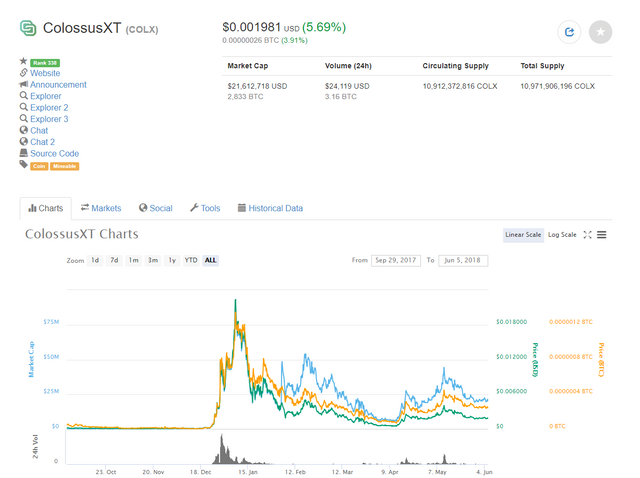
Vision/problem it solves:
ColossusXT is a community-driven, PoS 3.0, Masternode governance cryptocurrency, with a vision to build the Colossus Grid, which is a distributed grid computing framework that is highly decentralized and encourages privacy-friendly economy. It also aims to be top privacy coin, wth the most important privacy features I2P and ZeroCoin protocol.
It will combine grid computing with decentralized storage features and thus make resources available that now sit unused on the computers of thousands and millions of potential users around the world.
What is ZeroCoin Protocol and how does it work?
Zerocoin was proposed by Johns Hopkins University professor Matthew D. Green and graduate students Ian Miers and Christina Garman as an extension to the Bitcoin protocol that would add true cryptographic anonymity to Bitcoin transactions.
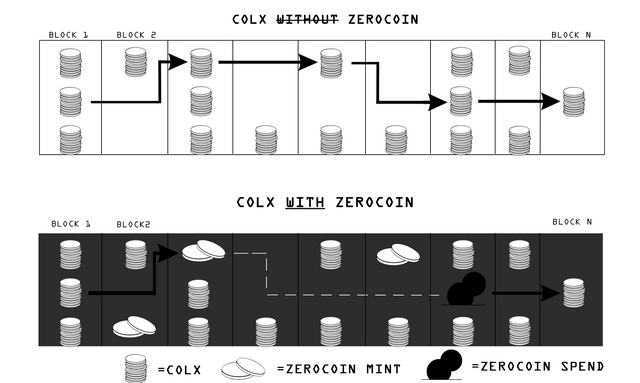
How it works:
You mint a coin by burning it up, and then at later time, redeem it for a new coin with no transaction history.
As you already may have figured it out, it makes it impossible to trace back the origins of coins.
What's minting a coin?
You begin the minting processing by destroying a coin and generating a random serial number. You take this random serial number, and cryptographically commit to it so you cannot change it at a later time and post it on the blockchain. In other words, think of it as if you have a safe which only you can open and you put it out for everyone to see it with other boxes. Now everyone knows that it's your box, but they don't know your serial number, because only you have the key to open it. Now you have burnt your coins.
Spending a Zerocoin:
When you want to redeem your coins (unlock the safe using analogy above) you do a Zerocoin spend transaction. You do this by showing the proof that you can verify that you have the key to open one of the locked boxes, without revealing which box it was, solely that it is one of the many lock boxes that people have put up.
Although you have revealed your serial number, other people still don’t know which lock box is yours since it remains locked. They still can't see which safe contained your key, this serial number is then marked as used so you can't redeem another coin with the same cryptographic proof and the network grants you a brand new coin with no transaction history.
I2P:
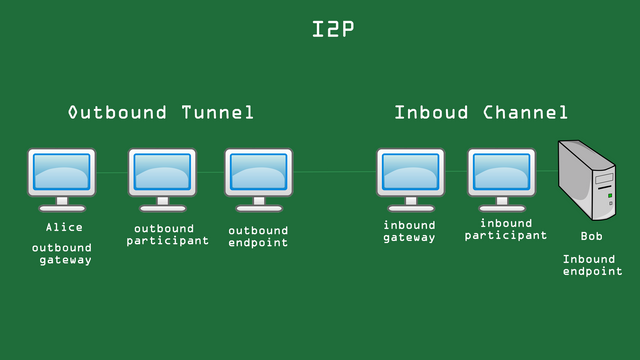
The network at a glance is made up of a set of nodes (routers) with a number of unidirectional inbound and outbound virtual paths (tunnels). Each router is identified by a cryptographic Router-Identity. These routers communicate with each other through existing transport mechanisms (TCP, UDP, etc), passing various messages. Client applications have their own cryptographic identifier (destination) which enables it to send and receive messages. These clients can connect to any router and authorize the temporary allocation (lease) of some tunnels that will be used for sending and receiving messages through the network.
What's Grid computing?
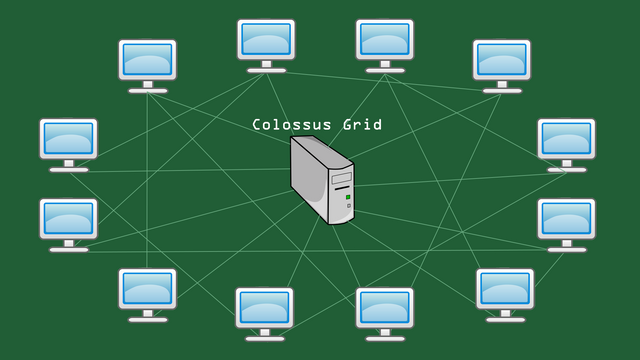
Grid computing combines computers from multiple administrative domains to reach a common goal, or to solve a single task. Machines may collaborate in a grid regardless of their physical distance; they can be connected by a local or a wide area network. Grids are not limited to certain types of machines either; they can integrate mainframes, personal computers and even smartphones. In a grid, these machines solve tasks as a single computer. This can be (but does not have to be) achieved by parallel computing, for which special kinds of algorithms are necessary to divide computational tasks in a way that they can be processed more efficiently in parallel.
In other words, if you're still confused the unused resources in a network of participants (when the user is away or the machine is waiting for user input) are combined to a grid model and made available to others who need computing resources.
Example 1: Doing large scale simulations. Weather simulation and prediction, modeling and predicting ocean currents and temperatures and so on.
Example 2: With ColossusXT Grid Computing, Sam can lend his computing power to SpaceX/NASA. SpaceX/NASA utilize the grid to perform a multitude of different calculations instead of sending a heavy and expensive Supercomputer into space. Reducing weight of aircrafts and utility in space.
What's decentralized storage?
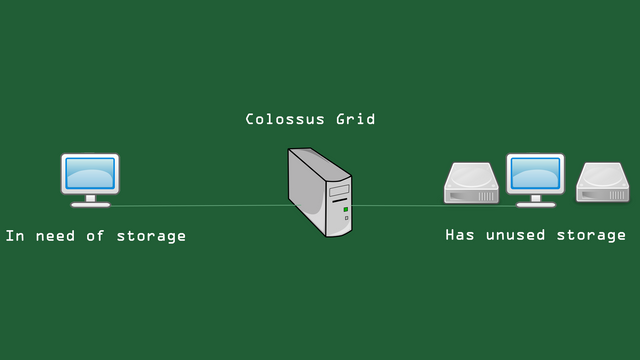
Analogous to the grid computing model described above, in decentralized storage unused resources that sit on network participants’ computers are made available to other participants, thus using the available resources more efficiently.
Example 1: I have some old HDDs laying around, not using it. Total of 50TB, another person needs storage where he can save his files, he needs 50TB, but has no money to buy all HDDs. So, I can lend him my 50TB of storage for some time.
Example 2: I need to send over a large file to one of my friends. There are a lot of paid services and it's a big hustle. So, I can just buy some storage, upload the file and let my friend download it. With this, you buy the amount of storage for the period of time you want, no monthly or yearly subscriptions.
Colossus Grid:
Colossus Grid is a novel, privacy-friendly grid computing and decentralized storage framework.
Colossus Grid will connect devices in a peer-to-peer network enabling users and applications to rent the cycles and storage of other users’ machines. This marketplace of computing power and storage will exclusively run on COLX currency. These resources will be used to complete tasks requiring any amount of computation time and capacity, or allow end users to store data anonymously across the COLX decentralized network.
In other words, Grid Computing + Decentralized Storage + Privacy = Colossus Grid
Partnerships:
ColossusXT team is working everyday to land new partnerships. So far they have partnered up with:
PolisPay (Physical Credit/Debit Card For Daily Use. Crypto > Fiat)
Indacoin (Buy Cryptocurrency With Credit/Debit Card)
CoinSwitch (Exchange Cryptocurrencies)
Crypto Emporium (Marketplace > Buy With Crypto)
Social media:
They're very active on Twitter and Discord. All the possible problems you may have with their wallet are answered on their Discord server. They have weekly updates, new wallet releases each month, new partnerships, overall they're very active on Social Media.
Team:
The team is really active, if you have any questions they answer quickly. I have personally worked with them, and made videos for ColossusXT as a community member, and they were very open to it and also gave a ton of suggestions. Their team consists of dozens of members from all around the world.
Product:
The Grid Computing (which is COLX' main mission) is not done yet, it will be at the end of this year, possibly.
They released their android wallet 1-2 month(s) ago, IOS is in work, ZeroCoin is on their Test Net.
All the other features are worked on.
Exchanges:
You can trade other cryptocurrencies for Colx on the following exchanges:
NextExchange (When their platform goes live)
CryptalDash (When their platform goes live)
Rating:
Total 10/10 (2 each)
Product 1.5/2
Grid Computing is not done yet, there's no IOS wallet as well and ZeroCoin is on Test Net with Atomic Swaps.
Team 2/2
Very active, diverse in the sense that people from video editing, programming, marketing, business etc. professions. Very active and friendly.
Social Media 2/2
Could be better, if they can respond to the investors/enthusiasts on their Tweets and Reddit posts. But if they Tweet, it's either a new exchange, update or partnership.
Edit: They do AMA at the end of every quarter on Reddit.
Partnerships 2/2
They're working very hard to land partnerships, getting new ones each month. Side note: They're also attending Summits (for example the London crypto summit where 2 team members presented ColossusXT)
Exchanges 1/2
Although, it's on a lot of exchanges, I will give 1/2, if it were on Kucoin then that would be 2/2. A lot of exchanges, but the only one that is decent is Cryptopia, and even there it's not as good as Kucoin.
But, they're getting there, slowly but surely.
Total: 8.5/10
If you liked my review, please give it a thumbs up and drop a follow! Also, comment down below what you think about ColossusXT, their vision, team. Are you invested in it?
Have a great day everyone!
Really solid write up here! Thank you!
Thanks)))